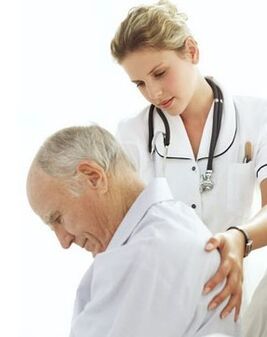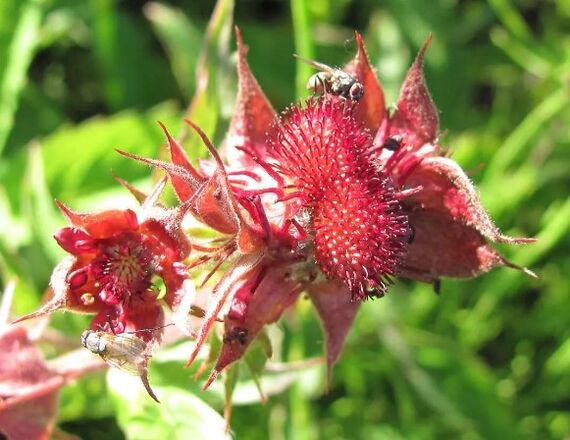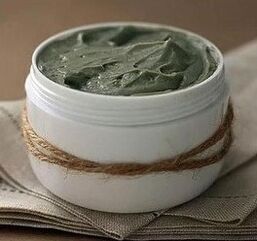Osteochondrosis-The disease of the spine, a characteristic feature, whose degenerative-dystrophic lesion of the intervertebral discs and then the vertebral tissue itself is.
The main sign for osteochondrosis is pain in the neck or back. Among other symptoms, muscle atrophy, impaired sensitivity, disorders in the work of internal organs are differentiated. Depending on the localization of the pathological process, cervical, breast and lumbar osteochondrosis are distinguished. If this disease and treatment do not pay attention, the process of damage to the spine is irreversible.

In English literature, the term "osteochondrosis" means such a group of diseases of the musculoskeletal system, such as: B. Osteochondropathy.
The main factor or the cause that leads to the development of osteochondrosis is an uneven distribution of the load on the spine, which occurs when wearing in one hand or in the shoulder of weights (e. g. bags, backpack), a long stay in a sitting position in the wrong pose, the night's sleep on an incredible mattress or an incredible materal or a pillow. Additional factors can also be a sitting lifestyle, obesity, injuries and flat feet.
All situations mentioned above over the years lead to frequent pain in the neck, chest or sacred spine.
According to statistics, osteochondrosis occurs between 40 and 90% of the world's population, mainly between the ages of 30 and 35. Under undesirable conditions, this disease develops in adolescence people, which most often contributes to wearing a heavy, unpleasant backpack, especially on a shoulder, unpleasant shoes and injuries.
The development of osteochondrosis
The development of osteochondrosis takes place in 4 selected stages (degree):
Osteochondrosis of the 1st stage.It is characterized by the beginning of the pathological process in the polipozoma core of the intervertebral disc - its dehydrated (dehydration) occurs, and later the height of the disc decreases. At the same time, cracks appear in the fibrous ring. At this stage, the patient usually does not feel any changes. Complaints can manifest themselves with an unusual position for a person or an active exercise.
Osteochondrosis 2 stadiums.With a decrease in the height of the discs, the distance between neighboring vertebrae also decreases, and the vertebrates and ligaments begin to sank slightly. This process leads to the ultravity of two neighboring vertebrae, which can lead to their slip and/or shift. Spondylolistz is formed. Due to repressed vertebrae, the patient feels really uncomfortable and sometimes pain in the field of pathology.
Osteochondrosis 3 levels.It is characterized by the formation of prolapesses and protrusions of slices, sometimes subluxation and arthrosis occur in the intervertebral disc joints. The patient can feel stiff in some movements, tingle in the limbs, sometimes numbness appears. In the third degree of osteochondrosis there is already pain in the back, neck and coccyx area, depending on the localization of the disease.

Osteochondrosis 4 steps.The body tries to correct the excessive mobility of the vertebrae and normalize the function of the spine. At the point of the connection of the vertebrae with pathology, the bone -navigation grow on each of them - osteophytes, which can lead to a nervous spine in the unnecessary place and sometimes a neighboring vertebra. The processes of the fibrous ankyloses can begin in slices and joints. The engine segment is overgrown and is turned up. At the same time, the main signs of osteochondrosis are minimized and sometimes generally not strange.
Symptoms of osteochondrosis
The main symptoms of osteochondrosis are symptoms and pain in the back or neck. The strength of the pain and other related signs of this disease depend on the degree of osteochondrosis.
Of course, due to the pathology of the intervertebral discs, their hernias, the growth of the vertebrae (osteophytes) there are a large number of diseases such as circulatory disorders, clamping of the nerves, irritation and violations of the normal functioning of the spinal cord, and even the fibrosis of the vertebrae, which the ash in the vicinity of the ash in the vicinity of the ash in the vicinity of the ash. All of these disorders can cause an extensive clinical image of the disease and are expressed by a numerous amount of different symptoms. Therefore, without a thorough diagnosis of osteochondrosis, it is very difficult to design the correct diagnosis and to prescribe adequate treatment.
However, we will look at the main symptoms of osteochondrosis:
- Pain in the back, cervix region, lower back, shoulders and even ribs;
- Complaints, stiffness of the back with some movements, raise a little;
- Dustiness of the limbs (arms and/or legs);
- The feeling of pain in the arms and legs, shaking frost;
- Muscle cramps;
- Disorders in the work of the genitals;
- Headache, dizziness;
- Heart pain;
- Impairment of sensitivity;
- Muscle hypotension;
- Increased tiredness, sometimes the eye.
Depending on the area of the spine in which osteochondrosis was hit, the following symptoms are differentiated:
Osteochondrosis of the cervical spine.Pain in your hands and shoulders prevail, headache, dizziness, "fly" or spots in front of your eyes, noise in your head. These signs can also indicate the presence of the syndrome of the vertebral artery, which can also complicate the work of the heart muscle and blood vessels of the myocardium if there are other diseases in them.
Osteochondrosis of the thoracic spine.Pain in the chest, areas of the heart and symptoms when breathing are breathing.
Osteochondrosis of the lumbosacral spine.Pain in the lower back prevails and give the legs or pelvic organs. Violation of sexual function.

Complications of osteochondrosis
If osteochondrosis is not treated and placed on a groove, this can lead to the development of the following diseases and pathologies:
- a hernia of the intervertebral disc (hernia of the spine);
- Projection;
- Kyphosis;
- Radiculitis;
- Deplacement in the space between the vertebrae of the salts;
- Spinal streak;
- Lose weight of the limbs and their atrophy;
- Paralysis of the legs.
The causes of osteochondrosis
- Mechanical trauma of the back (spine);
- Physical overvoltage of the body, hard work;
- nervous exhaustion, stress;
- Violation of metabolism, poisoning;
- Frequent residence in places with increased vibration;
- hereditary disposition;
- sitting lifestyle, sitting work;
- Violation of attitude at a young age;
- Obesity, obesity;
- flat feet;
- Wear unpleasant shoes (cramped, paragraphs);
- Night vacation on an uncomfortable bed - a mattress, a pillow;
- frequent dehydration;
- Inferior diet, hypovitaminosis;
- Smoke;
- Pregnancy.
Classification of osteochondrosis
The classification of osteochondrosis is very different because the disease itself has not been completely examined.
We emphasize the most popular opportunities to separate this disease.
A distinction is made between osteochondrosis. . .
Through localization:
- The cervix department © © ©
- BRUDREGEGION (TH or D)
- Lumbal (L)
- The sacred department (s)
Diagnosis of osteochondrosis
The diagnosis of osteochondrosis includes the following examination methods:
- Anamnesis;
- X -Ray test (X -Ray);
- Myelography;
- Neurological examination.
You can also appoint:
- Computer tomography (CT);
- Nuclear-Magnetic Resonance (Jamr);
- Magnetic resonance imaging (MRI).
Treatment of osteochondrosis
The treatment of osteochondrosis implies the use of a series of measures that have to be carried out for a relatively long period of time (from 1 to 3 months + about 1 year to rehabilitation), to which many patients react very ambiguously. It should therefore be noted that the forecast for the restoration of the patient is indirectly the recommendations of the attending doctor is minimal.

An additional problem with the treatment of osteochondrosis often becomes self -medication. The fact is that the clinical picture, as already written in the article with this disease, is quite clear and wide. Without diagnosis, the patient begins to select medication against what hurts and when he eliminates the pain, then deals with his daily life while the disease continues to progress.
The treatment of osteochondrosis is carried out with two main methods: conservative and surgical treatment. In addition, there are general recommendations in the treatment of osteochondrosis, such as: B. a diet, rehabilitation.
Conservative treatment of osteochondrosis
The conservative treatment of osteochondrosis aims to stop pain syndrome, the normalization of the spine and its components as well as the prevention of further dystrophic changes in the "axis" of a person.
The conservative treatment of osteochondrosis includes:
Pharmaceutical therapy.It is used to relieve pain and inflammation of the components of the spine of the tissue and the normalization of metabolic processes.
Various therapeutic blockade are also used to stop pain and inflammatory processes. In addition, they contribute to a decrease in the muscle tonic syndrome. There are: Blockade of trigger points as well as intra bones, paravertebral and epidural blockade.
Physiotherapy.It is used to relieve pain, improve the effectiveness of drug therapy and in rehabilitation period. The treatment is carried out using ultrasound, laser, magnetic fields, low frequency flows, etc.
Medical sporting lessons (exercise therapy), kinesiderapie.Specially selected, lectured exercises that aim to correct the sore muscles, strengthen, correction, correction of the attitude, the normalization of muscle tissue and its flexibility, decompression of nerve roots, prevent the disease from preventing possible complications. All above are restored to the entire musculoskeletal
Massage.It is used to improve blood circulation, to relieve the stiffness and the tension of the muscle tissue, to improve the general state of health.
Hydromassage.It contributes to the normalization of blood circulation, metabolism, an increase in muscle tone tone and the normalization of the nervous system. It implies a body massage with the help of a water current with a certain pressure that aims at it. The hydroma lathe has recently been used, in which air bubbles have been supplied with air bubbles in specially equipped baths or pools.
Manual therapy.It is used according to an individually selected program that expressly influences the bone muscle system. It helps to strengthen blood circulation and the lymph cycle, the metabolism, the mobility of the musculoskeletal system, to strengthen the immune system and prevent possible complications.
Expansion (traction) of the spine.It is used to use special devices to increase the intervertebral disc and correct the structure of the spine, which usually leads to minimizing or fully lollive pain.
The integrated use of the above treatment for osteochondrosis has a good effect.
Diet for osteochondrosis
With osteochondrosis, it is necessary to eat at least 1, 5 liters of water 6 -6 -6 times a day.
What can be eaten with osteochondrosis:Dairy products, low -fat meat (chicken, beef), jelly, flooded fish, towed meat, fresh vegetables (tomatoes, cucumbers, onions, carrots, beets, pepper, cabbage, celery, broccoli), fruits, avocados, nuts, sunflower seeds, spinach, mushoms.
What has to be minimized in food for osteochondrosis:Grapes, legumes (peas, beans, etc. ), flour products, spicy spices, sugar, salted food, meat broth and smoked meat.
It is better to cook food because the products with this preparation method keep the maximum amount of vitamins and trace elements.

Try to season salads with olive oil.
Surgical treatment of osteochondrosis
Surgical treatment of osteochondrosis is used when the conservative method is ineffective. Prescribed by the doctor present. It can also be used for heavy lesions of the spine and its components.
Treatment of osteochondrosis with folk remedies
People's remedy against osteochondrosis
Dough.Prepare a small dough of rye flour and 300 grams and let it lie down for a few days at room temperature. Drink a glass of milk and rub the place where the back hurts with a turpentine. After wrapping the dough in gauze and attaching it to the aching spot, tie a cellophane over it and then a scarf or a towel. After a while you can burn and tingle in this area, but tolerate how much you can do. Perform the procedure every other day. Do not use any batch dough more than three times.
Saber.Make a tincture from the saberfish. The place where the back hurts, with the prepared tincture with the prepared tincture and bandage with a handkerchief. In addition, you can take a few drops of tincture from the saberfish before going to bed.
Ointment made of osteochondrosis.Add 1 tablespoon to the container. A spoonful flour, 1 egg, 100 g butter and 1 tablespoon. A spoon vinegar, mix everything thoroughly and set a dark place for 2 days to pass. After deleting the resulting foam from the mixture. Mix the mixture again and rub the resulting ointment into a painful point.
Radish.Mix 300 ml radish juice, 200 g honey and 100 ml vodka. Grate your back with the resulting mix. This folk remedy also helps with radiculitis and rheumatism.





































